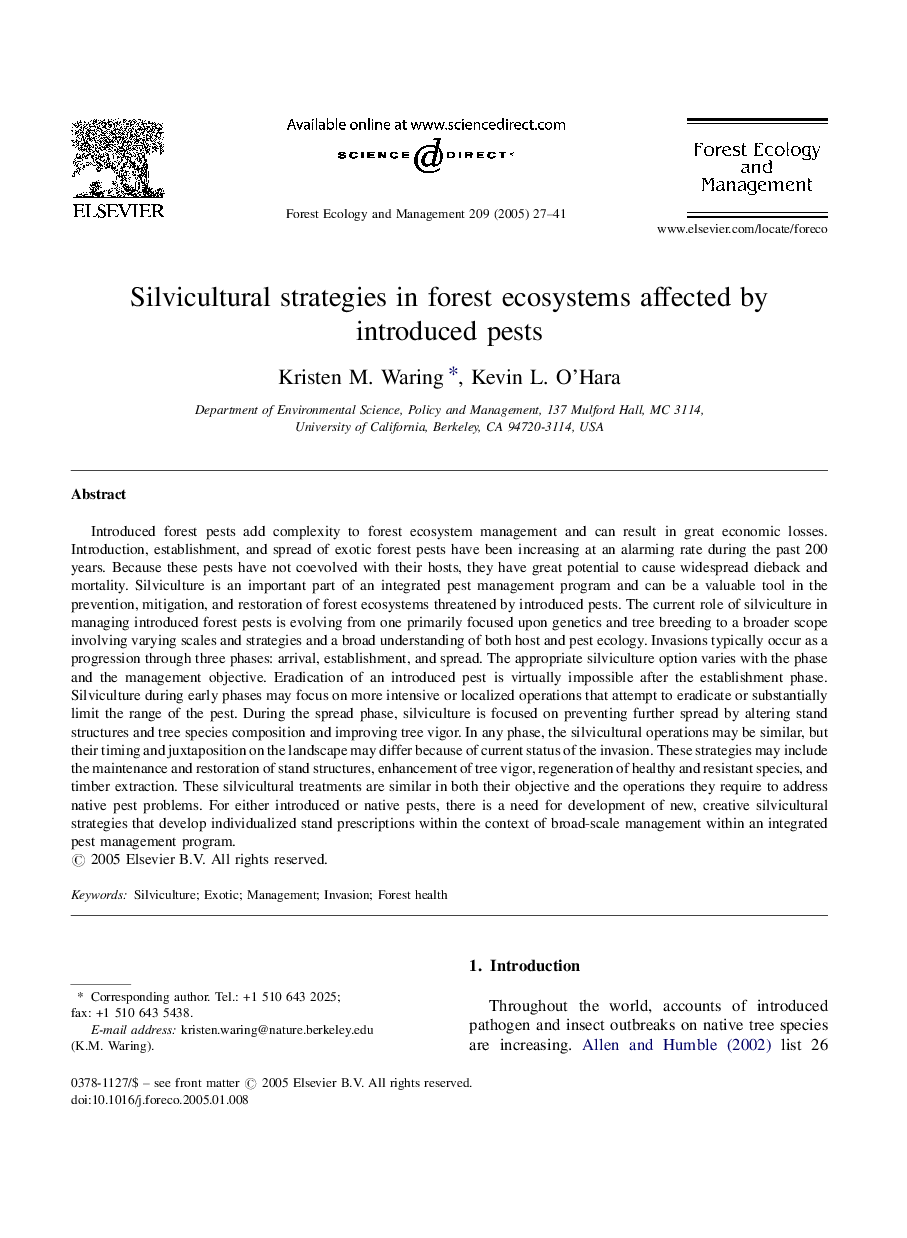| کد مقاله | کد نشریه | سال انتشار | مقاله انگلیسی | نسخه تمام متن |
|---|---|---|---|---|
| 9620392 | 159460 | 2005 | 15 صفحه PDF | دانلود رایگان |
عنوان انگلیسی مقاله ISI
Silvicultural strategies in forest ecosystems affected by introduced pests
دانلود مقاله + سفارش ترجمه
دانلود مقاله ISI انگلیسی
رایگان برای ایرانیان
کلمات کلیدی
موضوعات مرتبط
علوم زیستی و بیوفناوری
علوم کشاورزی و بیولوژیک
بوم شناسی، تکامل، رفتار و سامانه شناسی
پیش نمایش صفحه اول مقاله

چکیده انگلیسی
Introduced forest pests add complexity to forest ecosystem management and can result in great economic losses. Introduction, establishment, and spread of exotic forest pests have been increasing at an alarming rate during the past 200 years. Because these pests have not coevolved with their hosts, they have great potential to cause widespread dieback and mortality. Silviculture is an important part of an integrated pest management program and can be a valuable tool in the prevention, mitigation, and restoration of forest ecosystems threatened by introduced pests. The current role of silviculture in managing introduced forest pests is evolving from one primarily focused upon genetics and tree breeding to a broader scope involving varying scales and strategies and a broad understanding of both host and pest ecology. Invasions typically occur as a progression through three phases: arrival, establishment, and spread. The appropriate silviculture option varies with the phase and the management objective. Eradication of an introduced pest is virtually impossible after the establishment phase. Silviculture during early phases may focus on more intensive or localized operations that attempt to eradicate or substantially limit the range of the pest. During the spread phase, silviculture is focused on preventing further spread by altering stand structures and tree species composition and improving tree vigor. In any phase, the silvicultural operations may be similar, but their timing and juxtaposition on the landscape may differ because of current status of the invasion. These strategies may include the maintenance and restoration of stand structures, enhancement of tree vigor, regeneration of healthy and resistant species, and timber extraction. These silvicultural treatments are similar in both their objective and the operations they require to address native pest problems. For either introduced or native pests, there is a need for development of new, creative silvicultural strategies that develop individualized stand prescriptions within the context of broad-scale management within an integrated pest management program.
ناشر
Database: Elsevier - ScienceDirect (ساینس دایرکت)
Journal: Forest Ecology and Management - Volume 209, Issues 1â2, 18 April 2005, Pages 27-41
Journal: Forest Ecology and Management - Volume 209, Issues 1â2, 18 April 2005, Pages 27-41
نویسندگان
Kristen M. Waring, Kevin L. O'Hara,